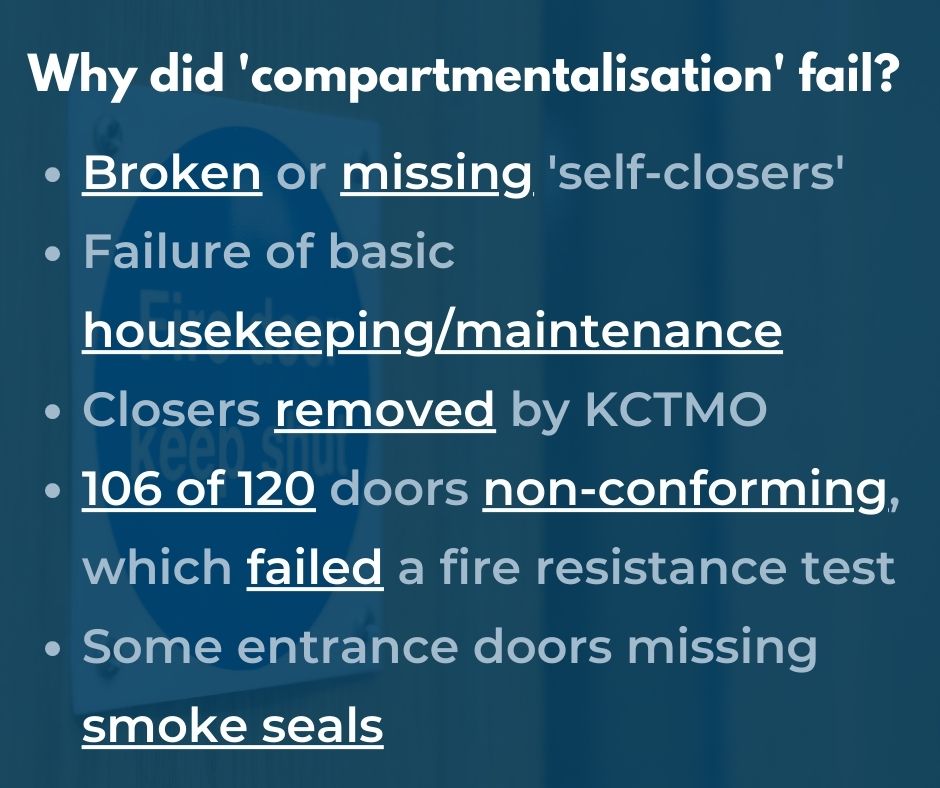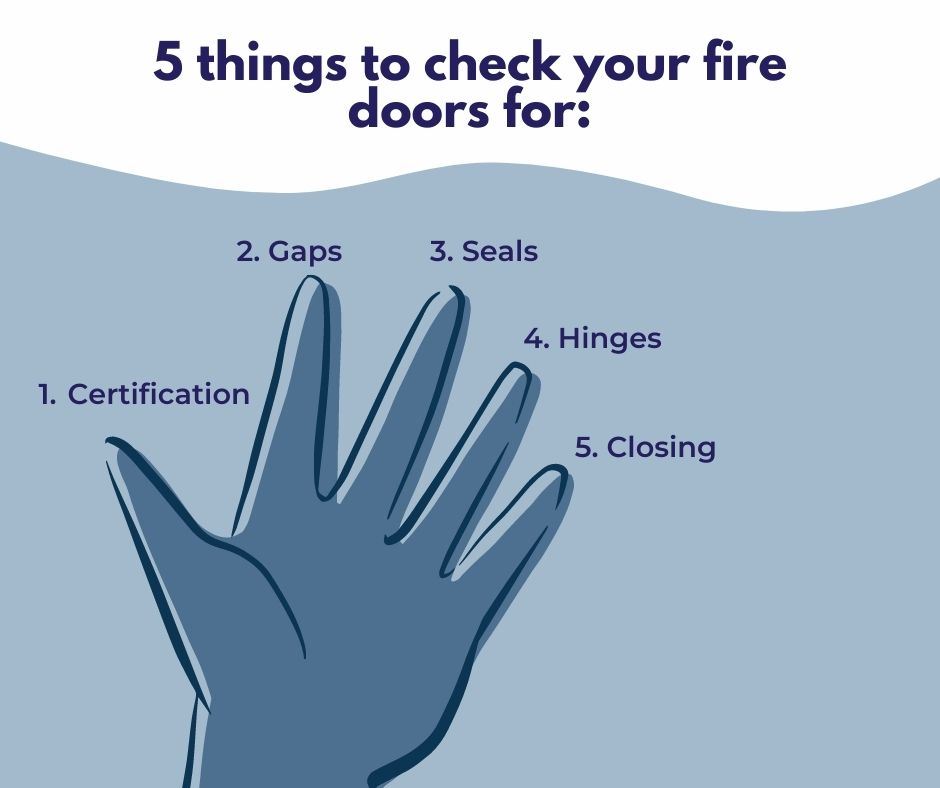It should go without saying that fire doors are paramount in fire safety and prevention – they’re an essential tool in preventing the spread of a fire throughout buildings, and can mean life or death for those inside. However unfortunately, they are not always correctly maintained or are of sub-standard quality, leading to an increased need for fire door safety awareness and the introduction of further regulations, including the Building Safety Bill.
The Building Safety Bill
 On 5th July this year, the Building Safety Bill was introduced. Despite centring on the need to amend existing issues with the regulation of structural elements which were key in spreading the Grenfell fire, the bill also seeks to reduce the risk of fire for entrance doors to individual flats that open into common parts.
On 5th July this year, the Building Safety Bill was introduced. Despite centring on the need to amend existing issues with the regulation of structural elements which were key in spreading the Grenfell fire, the bill also seeks to reduce the risk of fire for entrance doors to individual flats that open into common parts.
A report published in January 2020 by Inside Housing looked at why ‘compartmentalisation’ of the building failed so dramatically and found that the reasoning was multifaceted. In many instances, ‘self-closers’ were broken, or simply missing on many doors with this issue largely resultant from failure of basic housekeeping/maintenance. This issue was exacerbated by Kensington and Chelsea Management Organisations (KCTMO) removing the closers, according to witness statements.
Combine this issue with questions about the quality of the doors (doors underwent a replacement programme which replaced 106 of the 120 doors with non-conforming product which had failed a 30 minute fire resistance test by 15 minutes) and the fact that some entrance doors were not fitted by smoke seals makes the question about how this tragedy didn’t occur sooner all the more confusing.
How can you check your fire doors?
 Investigating your own fire doors could save lives, and taking a few simple steps can help you identify any issues and take action before its too late:
Investigating your own fire doors could save lives, and taking a few simple steps can help you identify any issues and take action before its too late:
- Certification: Look for a paper certificate. Without this certification, you cannot be certain that the door is conforming or safe in the event of fire. If paper certification cannot be found, the door will likely feature a manufacturer label or a colour coded plug which indicates the fire resistance rating of the door. If a label or plug can’t be found, you should seek to cross-reference pre-existing documentation in log books and manuals with the doors. In many cases, especially with older buildings, it may not be possible to find certification. In such a scenario there will be no such manual and it will be necessary to inspect the door for identification marks and it should be considered that fire separation performance of any door, certificated or otherwise, will be affected by the quality of its original installation and any maintenance works carried out since.
- Gaps: Check the gaps around the top of the door and sides are consistently less than 4mm when closed. At a width of around 3mm, you can use a £1 coin to feel for scale.
- Seals: Look for any intumescent seals around the door or frame and check that they are intact and not damaged.
- Hinges: Check all hinges are firmly fixed and there are no loose or broken screws.
- Closing: Assess how the door closes onto the latch without sticking on the frame or floor.
 Where there appear to be no identification marks on fire doors this may be because they have been removed by the installer or covered by paint but it could also be that the door is not certificated and because no documentary evidence of performance exists it can only be at best a Nominal fire door. A Nominal fire door is a door where there exists no evidence of fire separation performance. Nominal fire doors should be thought of as an ‘unknown’ in relation to their performance and it may be suitable to remove the door and recruit the expertise of a professional to assess the suitability of the door.
Where there appear to be no identification marks on fire doors this may be because they have been removed by the installer or covered by paint but it could also be that the door is not certificated and because no documentary evidence of performance exists it can only be at best a Nominal fire door. A Nominal fire door is a door where there exists no evidence of fire separation performance. Nominal fire doors should be thought of as an ‘unknown’ in relation to their performance and it may be suitable to remove the door and recruit the expertise of a professional to assess the suitability of the door.
How do I make sure my building is safe?
We understand that it might be a bit daunting to do these checks yourself – after all, you want to make sure that everything has been done correctly to ensure the safety of everyone in your building. Not everyone can be an expert on health and safety but luckily for you, we are! We offer a comprehensive risk assessment service, including fire risk assessments, so you can feel secure in the knowledge that the safety of your property has been thoroughly and professionally checked.
You may also appoint and train a designated Fire Warden, whose responsibilities include producing fire risk assessments and maintaining fire equipment records.
We’re always happy to advise and answer any and all health and safety questions, so please feel free to get in touch!
Written by our SHEQ Consultant, Jack Stevens

For more information about fire door safety, visit the Fire Door Safety Week website. We are also currently running an offer on our Fire Safety, Fire Warden and Slips, Trips & Falls courses for this month only! Get 10% off these essential online safety training courses with the code ‘fire10’ at checkout.
To keep up to date with the latest health & safety news and advice, follow us on social media:
Facebook | Instagram | Twitter | LinkedIn
